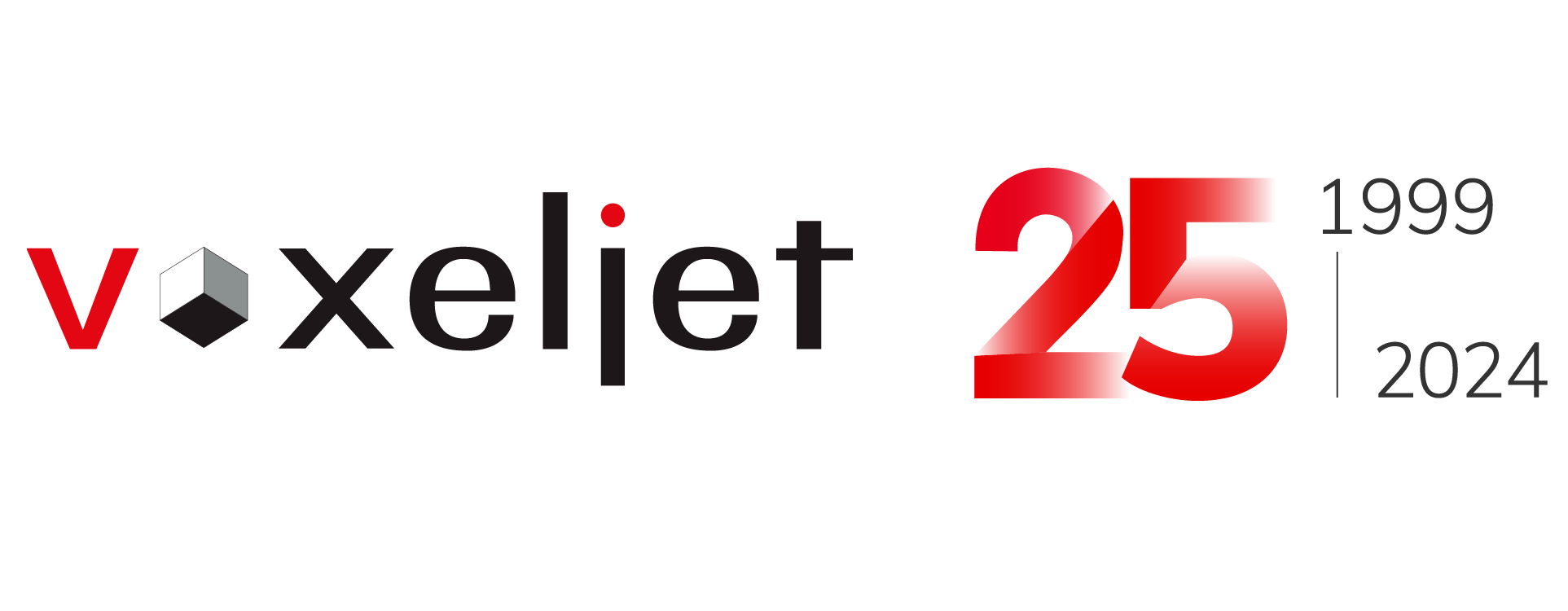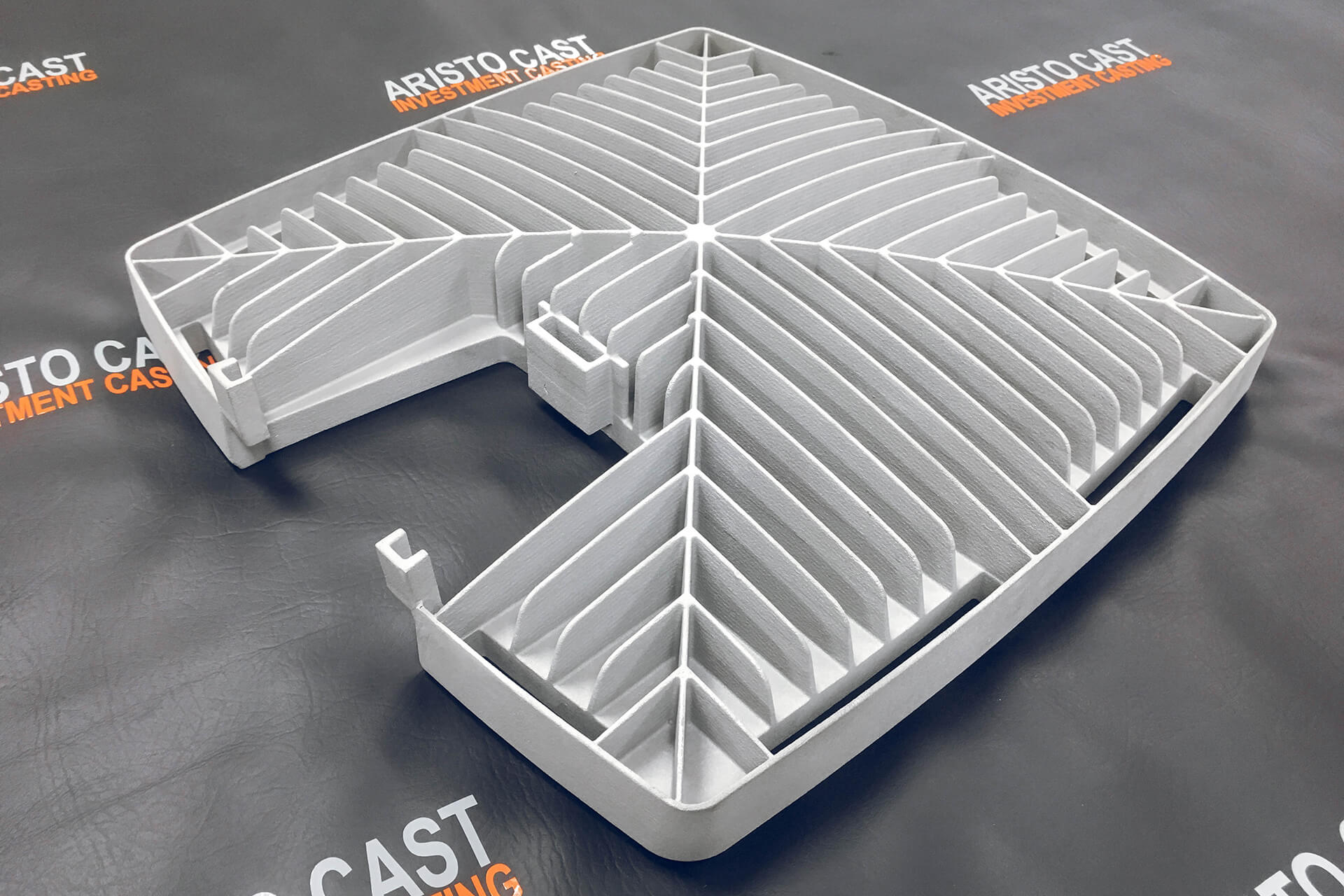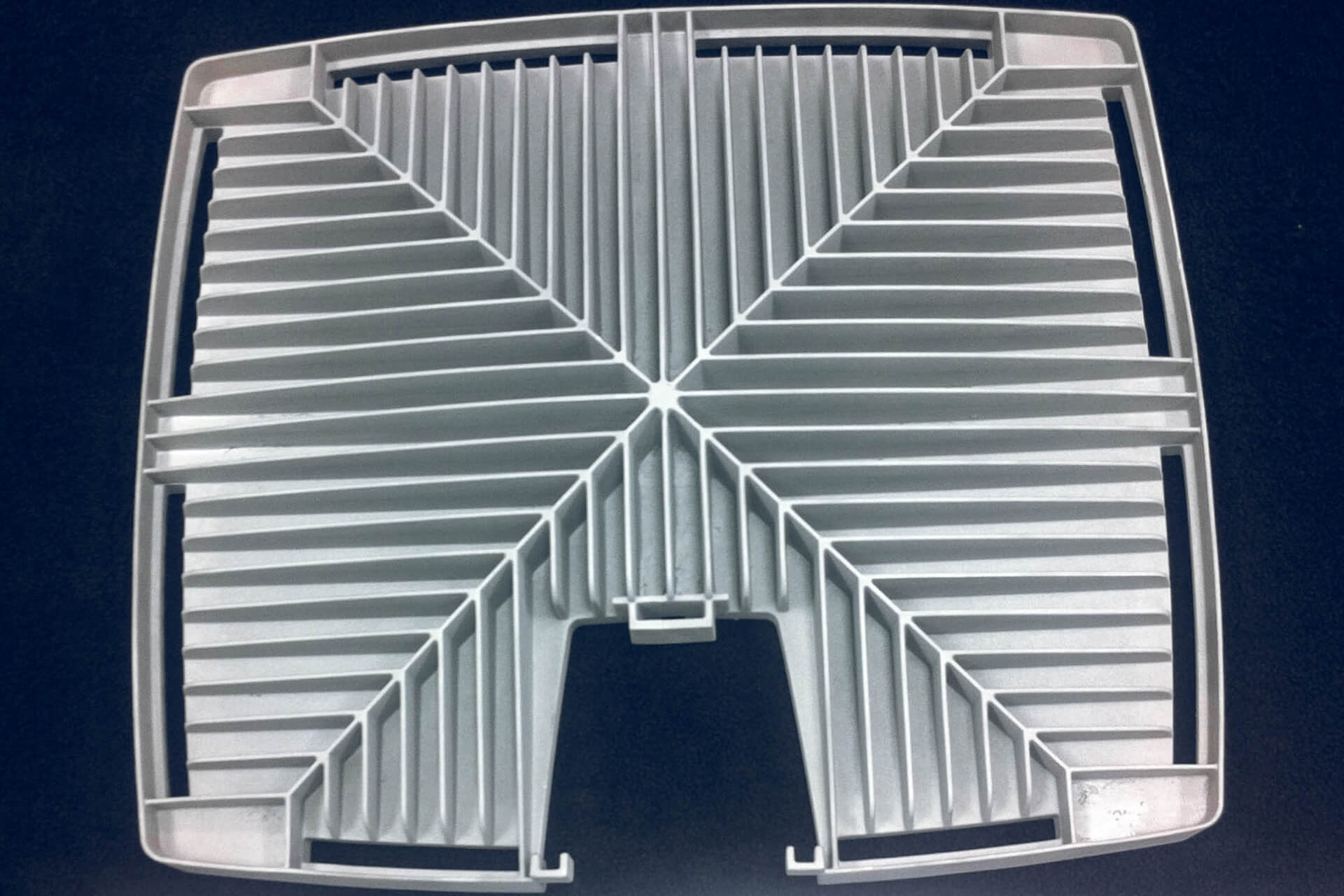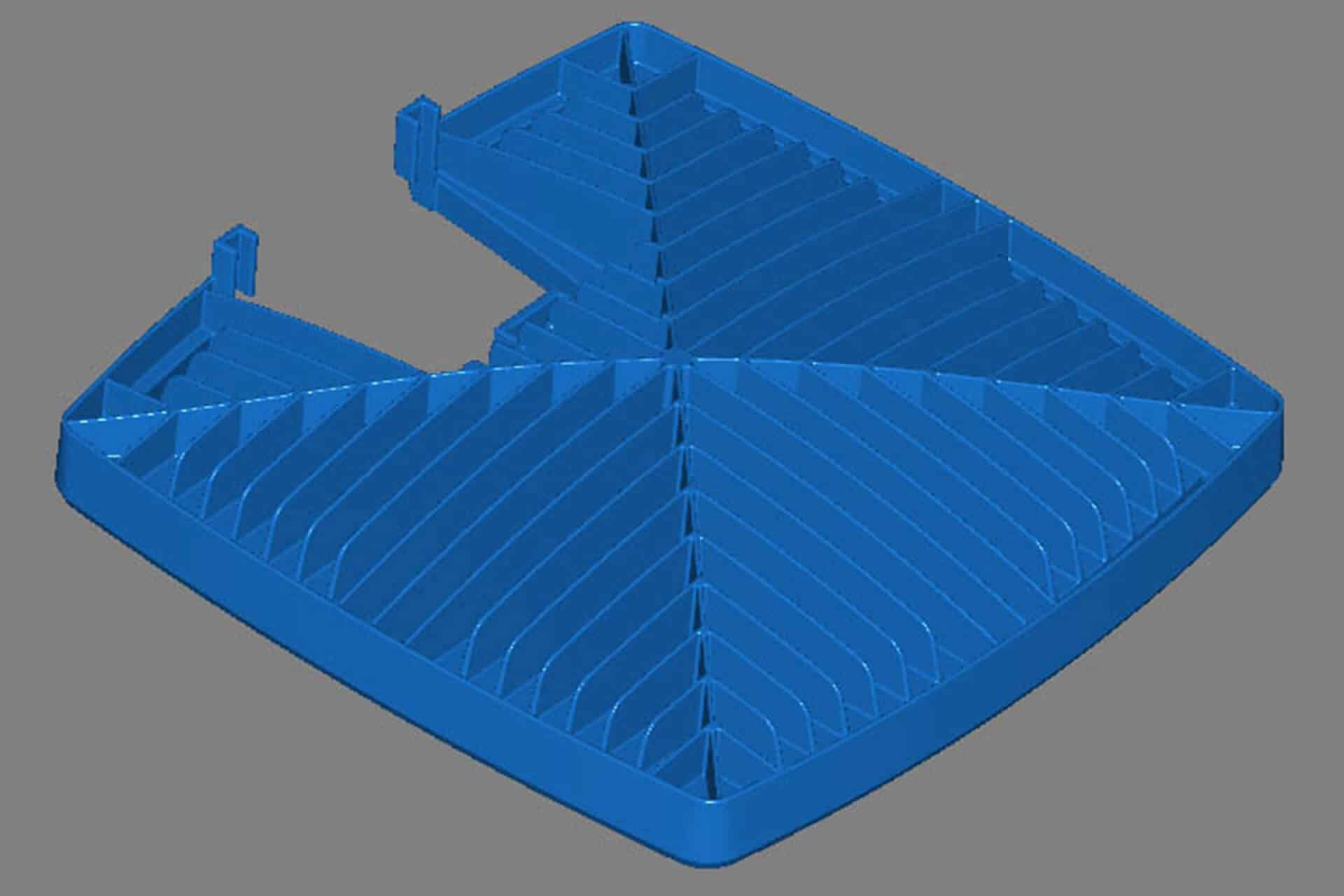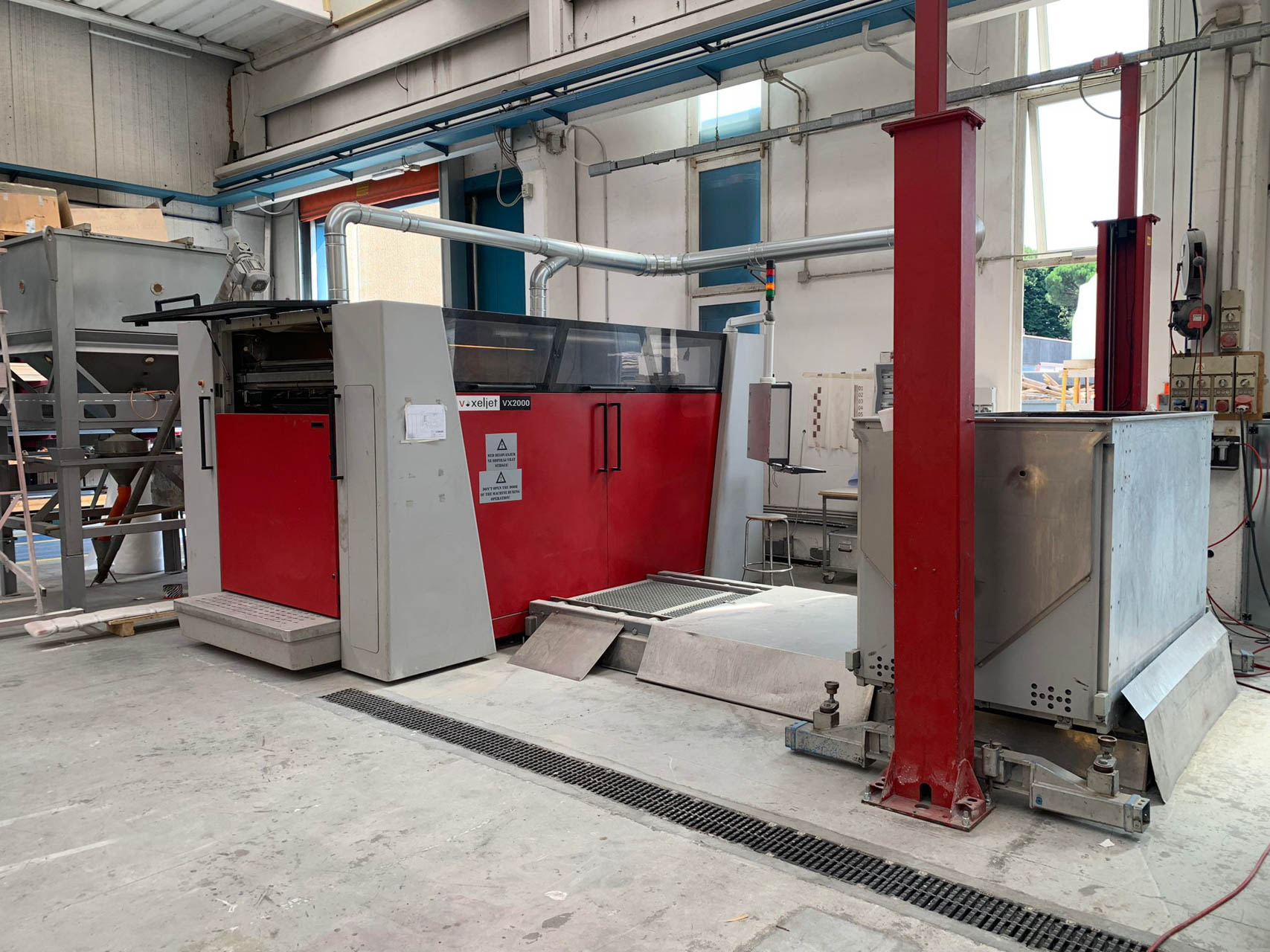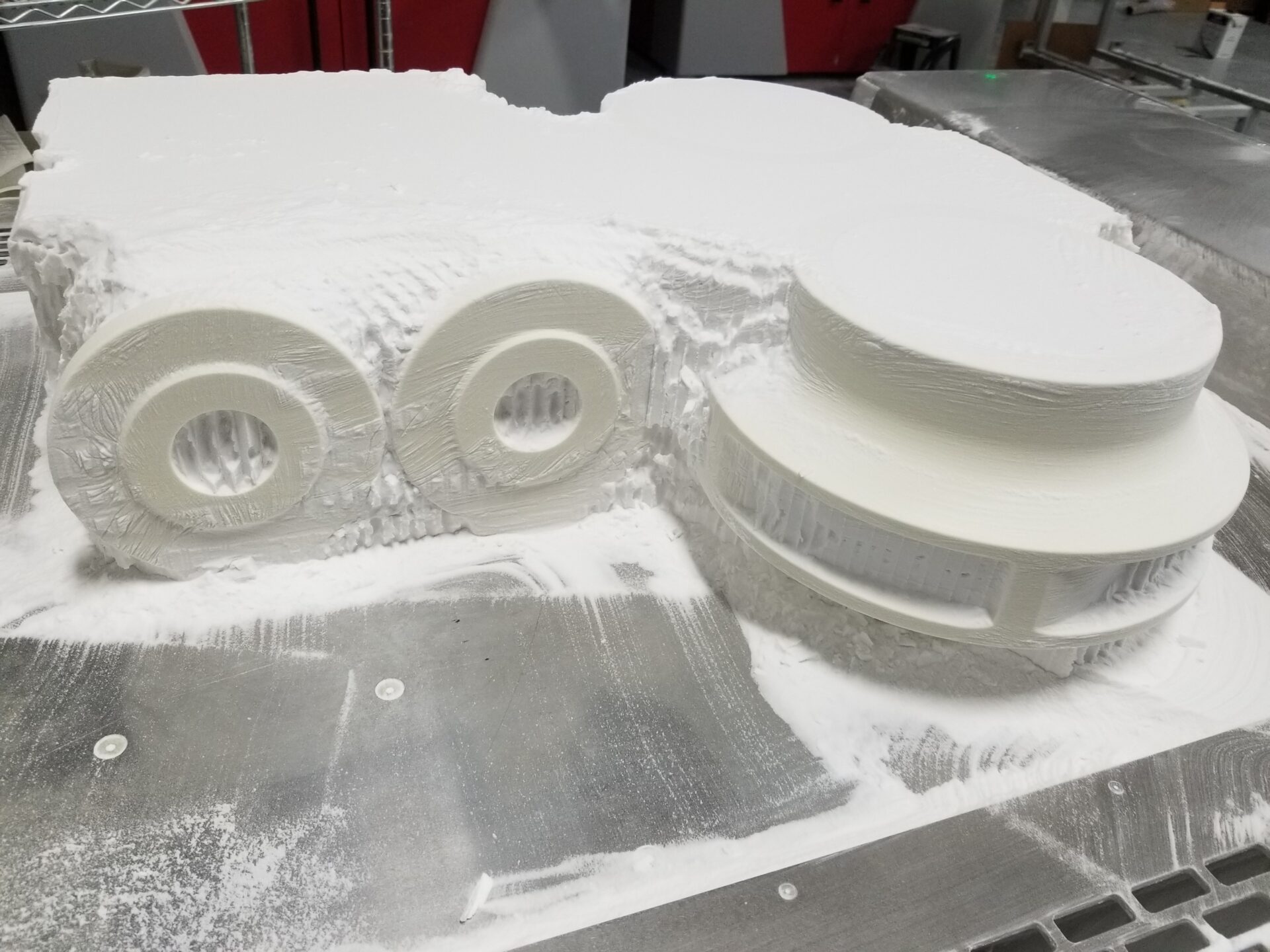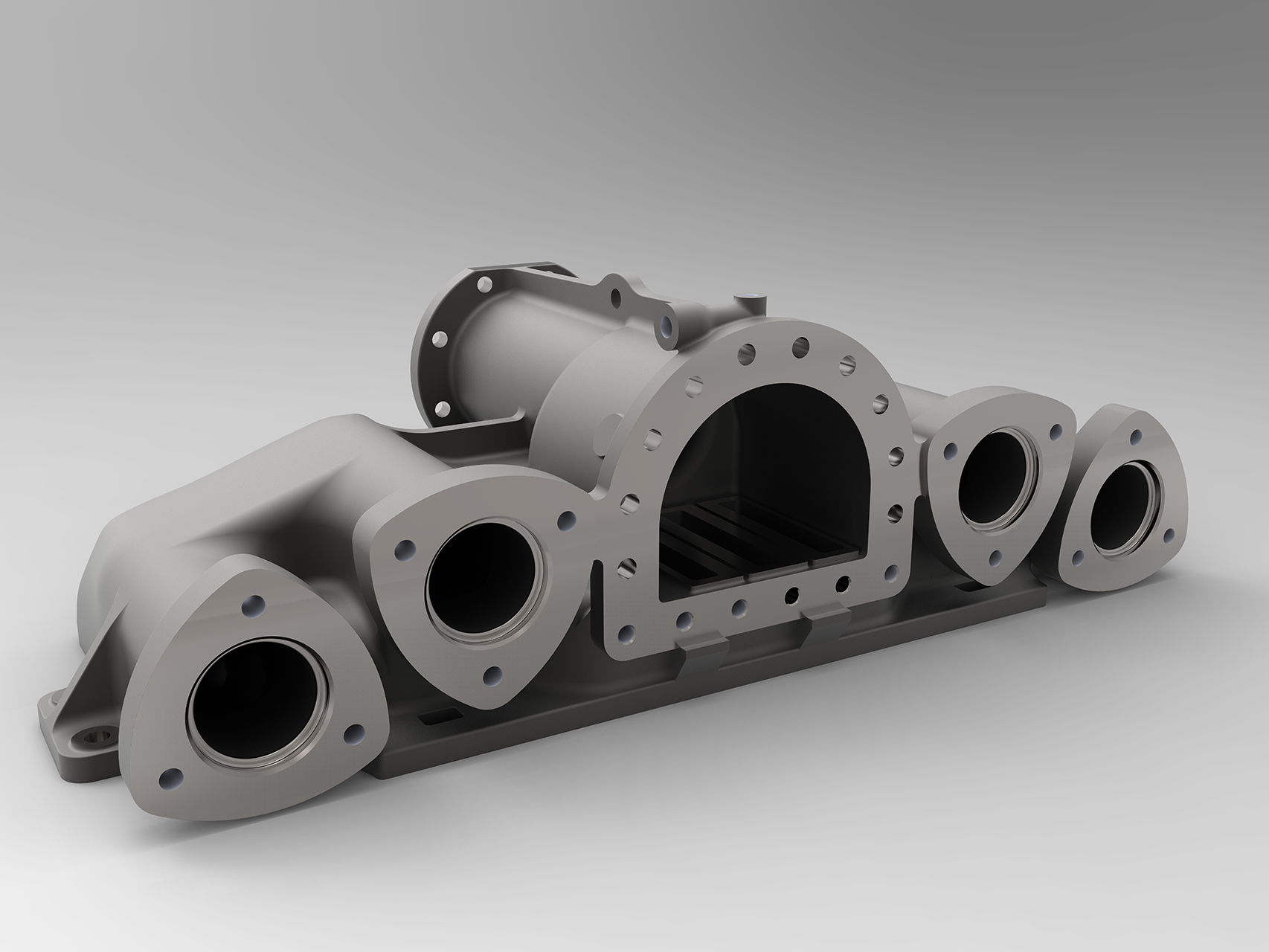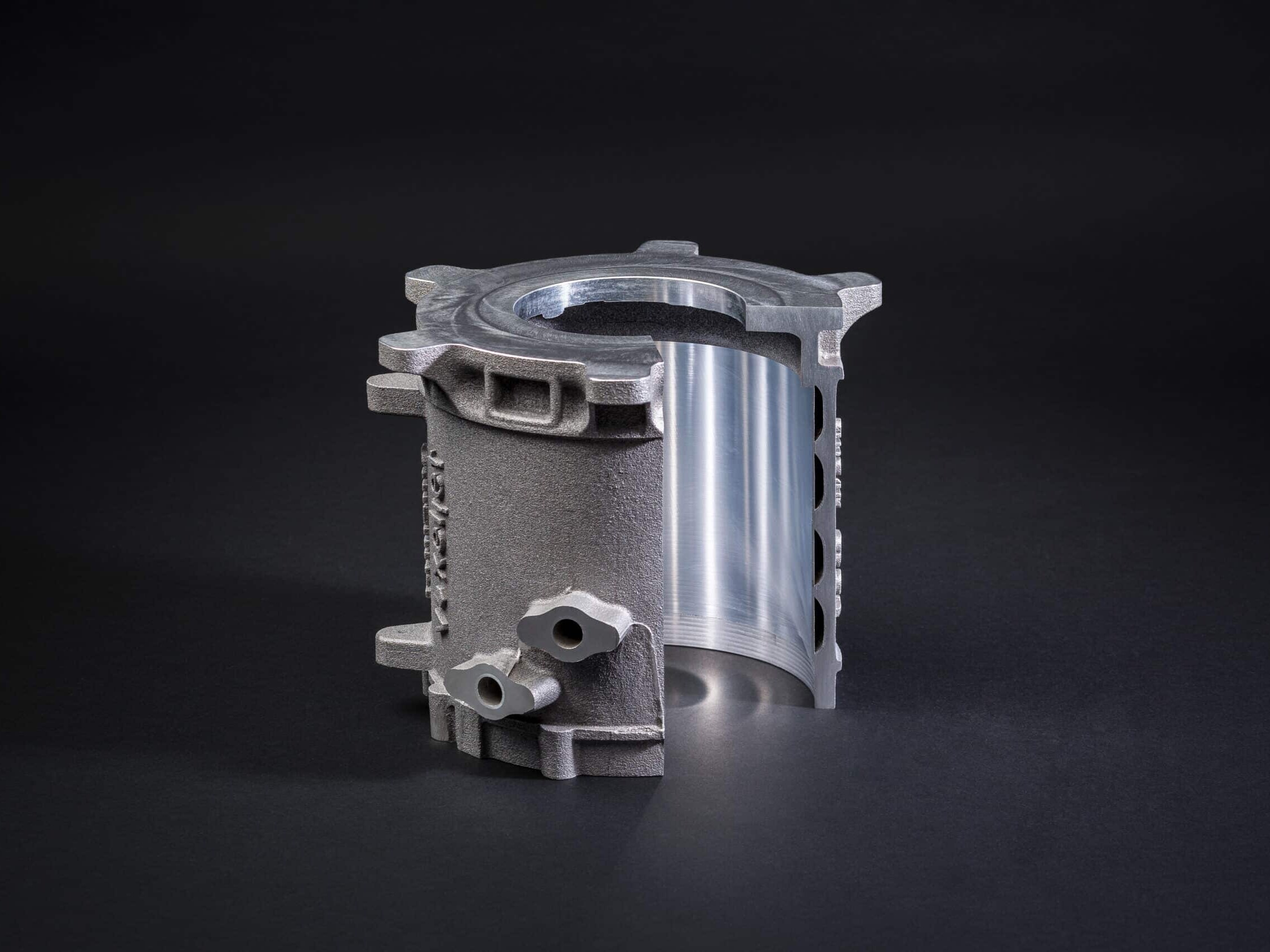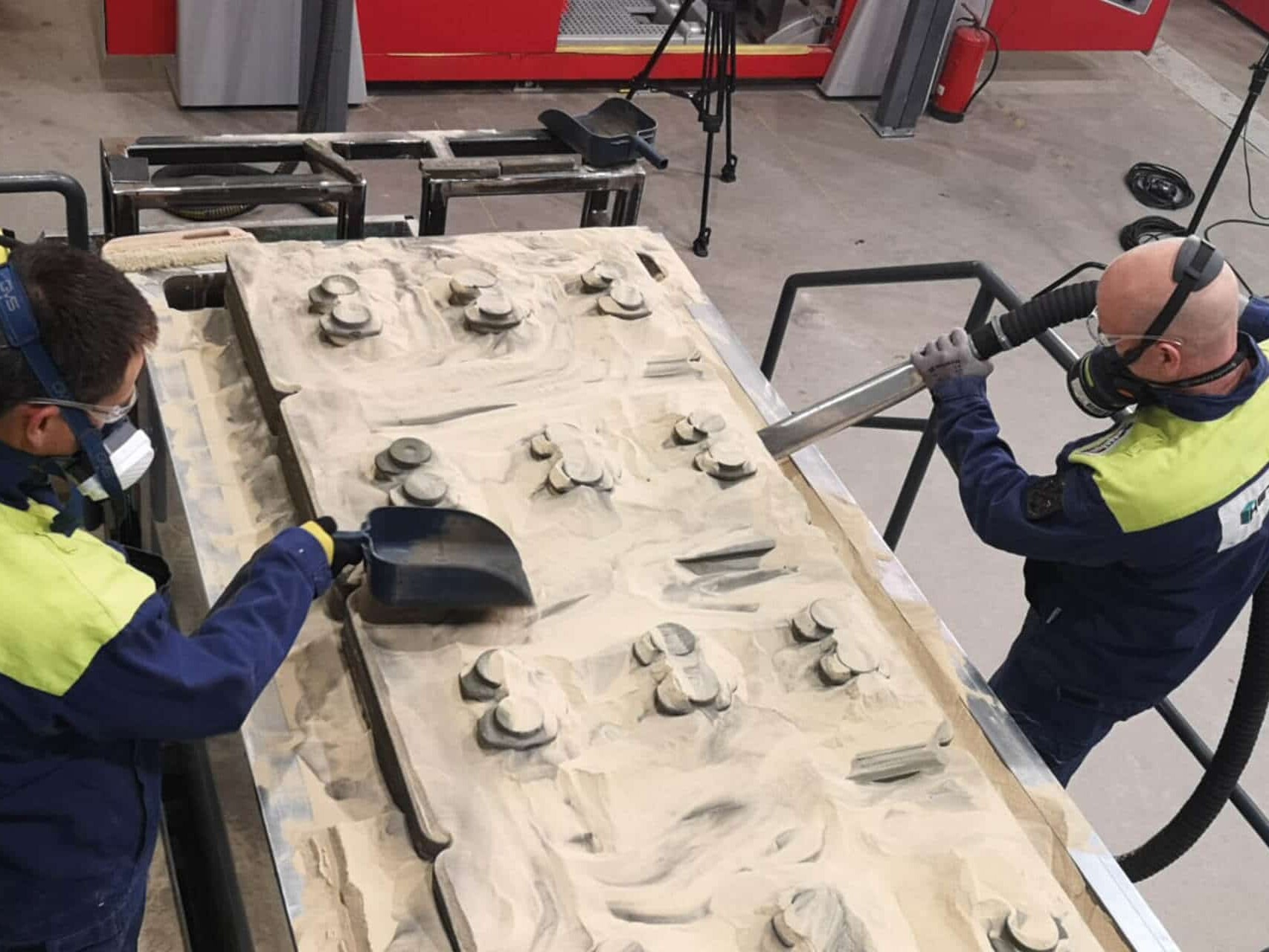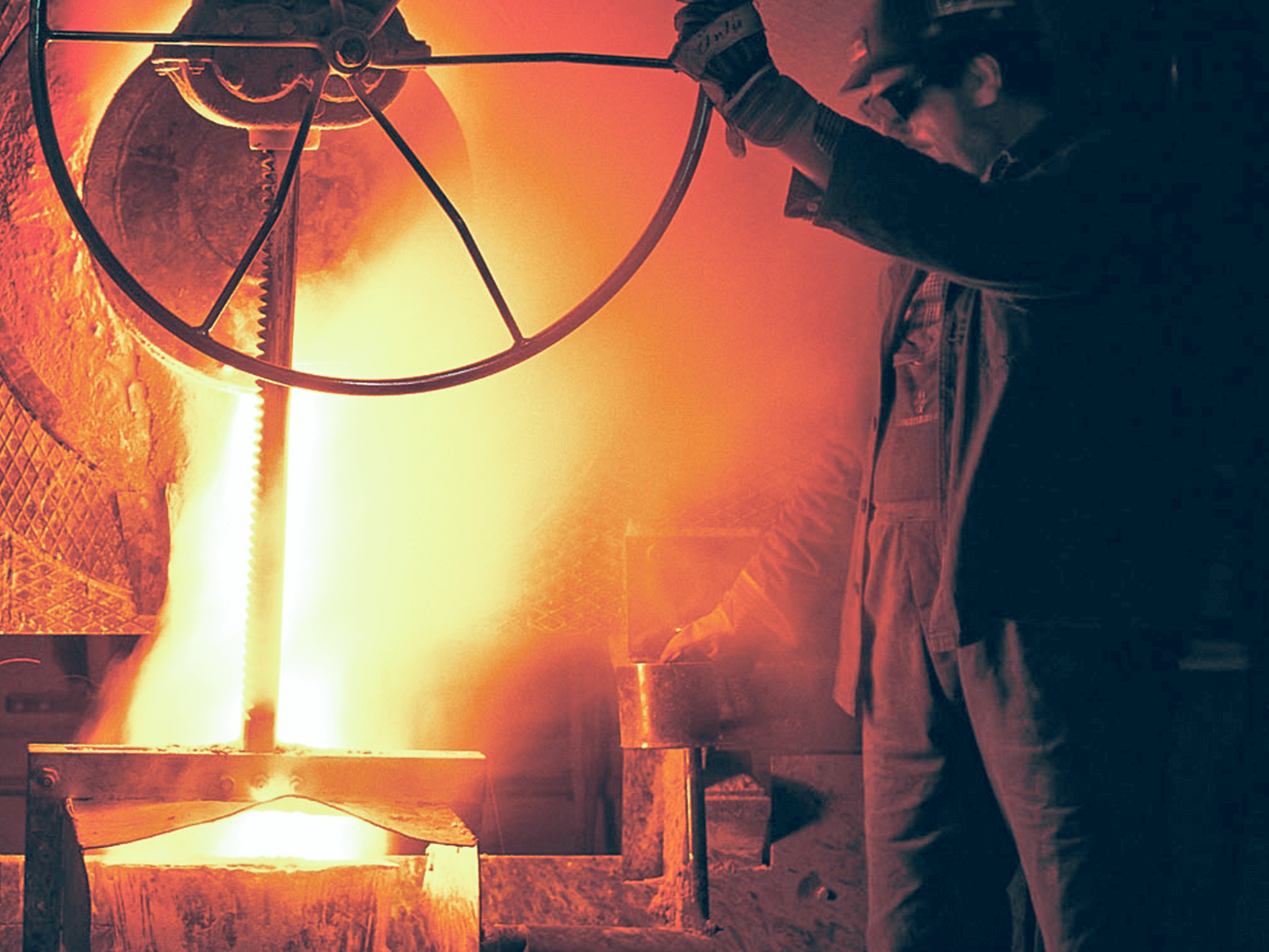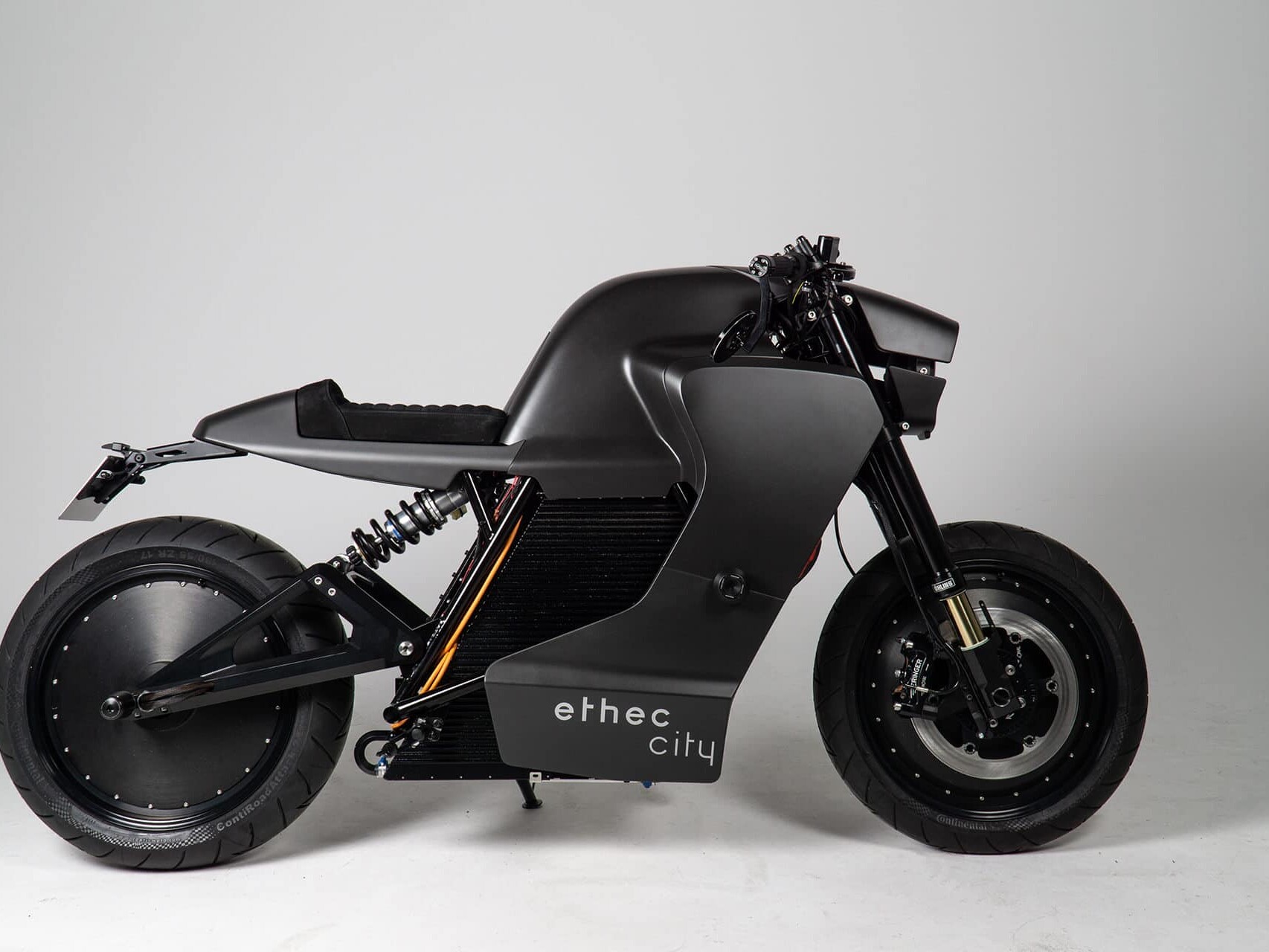- Home
- Case Studies
- Foundry
- Optimized LED lights
voxeljet optimisesCree's LED lights
voxeljet’s VX1000 3D-printing system saves time and money in prototype construction. Cree Inc., one of the world’s leading manufacturers of LED lights, has found a way to make prototype construction faster and more cost-effective. The company for state-of-the-art LED technology has investment casting models produced with the VX1000 3D printing system from voxeljet – the casting is handled by the multi-award-winning Aristo Cast investment foundry.
Whether desk lamp, advertising display or street lamp: Light Emitting Diodes (LEDs), the successors of the light bulb, have long been an integral part of life. And are still on the advance. While sales of LED lamps in Europe reached one billion euros in 2011, it is forecast to rise to 14 billion euros by 2020.
This boom also motivated Cree Inc. The US company from North Carolina is one of the LED pioneers; in 1989, it introduced a blue LED to the market and today enjoys revenue of over 1.6 billion US dollars. And Cree does not intend to ease up. The R&D Department pursues the objective to further optimise LED technology. This applies not only to the diodes themselves but also to the grooved heat sinks which can be found on the back of LED circuit boards for high-performance LEDs – as can be seen in modern street lights. The heat sinks are made of heat-conducting materials such as aluminium or copper which emit the operating heat from the diodes to the ambient air ensuring a low operating temperature and longer lamp life.
Investment casting: classical mould making reaches its limits with freedom of design
But how do heat sinks have to be shaped to be light, efficient and visually appealing at the same time? The R&D department is testing this with prototypes produced by Aristo Cast, a multi-award-winning investment foundry from Almont in the US state of Michigan. The problem: The production of molds for the investment casting of heat sinks is becoming more and more uneconomical with increasing geometric complexity. Hours of manual work and expensive injection molding tools and wax presses are required to build wax patterns for the molds. In the past, it was not uncommon for it to take weeks before Cree held the first part in its hands. In addition, not all geometries could be realized, as the classic mold construction restricted the freedom of design.
Aristo Cast no longer wanted to impose these restrictions on the customer and therefore established an alternative: the industrial 3D printer VX1000 from voxeljet. A 3.5 tonne 3D printing system with a 1,000 x 600 x 500 millimeter installation space and an effective building volume of 300 liters.
Since the additive process only requires CAD data, complex models for innovative cooling elements can be produced digitally without the need of tools. This CAD data printed using PMMA is subsequently processed by Aristo Cast directly for cast parts, which significantly optimizes Cree’s development and makes new designs possible which were previously difficult to build.
The specific advantage of 3D-printed heat sinks lies in the efficient design of the cooling elements, which often involves a complex geometry to cool the LEDs as well as possible. The more complex the cooling element, the more durable and efficient the LED – ideal conditions for 3D printing.
Almost any mould takes just a few hours to be build using the voxeljet 3D printing system
With the VX1000 printing system from voxeljet, a mould can be produced in just a few hours. Aristo Cast simply feeds the 3D-printing system from voxeljet with a CAD file representing the prototype’s digital construction plan. A few steps later and the printing of the positive model begins
Within the 3D-printing system, a so-called recoater spreads a 150 micrometer thick layer of the plastic poly methyl methacrlyat (PMMA) on the building platform. In the next step, a print head applies the binder only to sections where the prototype is supposed to be built. 100% of the non-printed powder can be recycled and reused. Subsequently, the building platform is lowered by one-layer thickness and the process repeats. The vertical building progress of this layering is approx. 18 millimetres per hour. That sounds comfortable but is much faster than classic mold construction, which often takes several weeks for complex geometries.
When the printing is complete, Aristo Cast covers the positive model with wax to seal the surfaces. The model is subsequently coated with several ceramic layers. The PMMA model is then burned out using an autoclave. At a temperature of 700 °C the PMMA powder burns out with nearly no residual ash. What remains is the finished, ceramic positive mould for the precision casting of the prototype.
The printing of the 43 x 43 x 11 centimetre model weighing 1,900 grams only takes around six hours. Cree Inc. uses these time advantages to manufacture prototypes of cooling elements more time efficiently. Through the nesting, the stacking of the components in the jobbox, several models can be produced at the same time. Therefore, eight of these models can emerge from just one jobbox in only 24 hours.
The conventional production process would have taken weeks for this size. For this component, Binder jetting gives us the possibility of completing the model in the shortest time and with substantial cost savings.
Paul Leonard, Vice-PresidentAristo Cast Inc.
A further time advantage lies in the saving of ceramic layers. Through the negative thermal expansion coefficients of the PMMA powder, the models collapse when the ceramic shell is being burned. Therefore, fewer ceramic layers can be used to build the model leading to material and time savings.
Thanks to the 600 dpi resolution of the VX1000, Aristo Cast is able to realize filigree geometries. Therefore, the units from Cree can be easily constructed with wall thicknesses of 2.5 millimeters. Even undercuts, design elements protruding freely from the casting, are possible. The objective of the designers of Cree Inc. is to remove as many limits as possible. Designers from all sectors can benefit from Binder Jetting 3D printing technology. As an example, they can develop new geometries for engine parts and lightweight doors. Using these modern additive manufacturing technologies, 17 days after the order, Cree was able to complete five finished cast prototypes. If the project planning was carried out using conventional product development, it would’ve taken up to 6 weeks for the first prototype to be completed.
The smaller the batch size, the bigger the cost benefit
With regard to other additive production methods such as direct metal printing or wax models, voxeljet’s Binder Jetting process shows both economies of scale and cost advantages.
Using conventional mould construction, we were only able to construct cooling elements in just one piece. Direct metal printing is unsuitable partly due to the size and partly due to the enormous costs involved.
Paul Leonard, Vice-PresidentAristo Cast Inc.
“In this case a printed PMMA model was the optimal solution”. David Tait, Managing Director of voxeljet America Inc. explains: “The smaller the batch size, the greater the cost advantage of voxeljet technology. Especially for complex geometries, 3D printing is the most economical alternative, even for batch sizes of several hundred, although it cannot yet replace classic mould making for large series”.
Further Case Studies
Lanulfi Models optimizes mold making with VX2000
The integration of voxeljet’s VX2000 has redefined Lanulfis approach to metal casting. It offers significant reductions in lead times and enhances design capabilities.
PMMA 3D printing conquers North America
Express Prototyping belongs to the leading experts for 3D printing investement casting patterns in North America. Learn from the CEO Thomas Müller how he established the business and how he sees the future.
Boro Foundry – Superheater Header
Using the combination of sand and 3D printing, the British foundry Boro Foundry was able to produce a flawless spare part for a steam locomotive.
3D printing for optimized electric motors
Aiona Cast has filed a patent application to significantly optimize electric motors. The company produced a prototype using 3D printing.
With a new VX2000, a 3D sand printer for metal casting, Hetitec produces finished castings in a matter of days.
Printed castings for investment casting
Whether it’s aerospace, automotive or design applications, the us-based award-winning foundry Aristo Cast counts on 3D printed patters for investment casting.
Printed Castings – Optimized housing lets E-Motorcycle Batteries live longer
By using innovative technologies such as 3D printing, the prototype could soon go into series production.
3D Printing Solutions
Want to learn more about us and 3D printing? Click here for the entire voxeljet solution portfolio.
